Tasha and the Faces of RC - UPDATE May 3, 2017
Tasha can run, and run she must. Lucky and Holly are an alliance against her. But Tasha relies on her speed and the security of her white pine—a.k.a. the cub tree as a Lily Fan captured in this 1:12-minute video.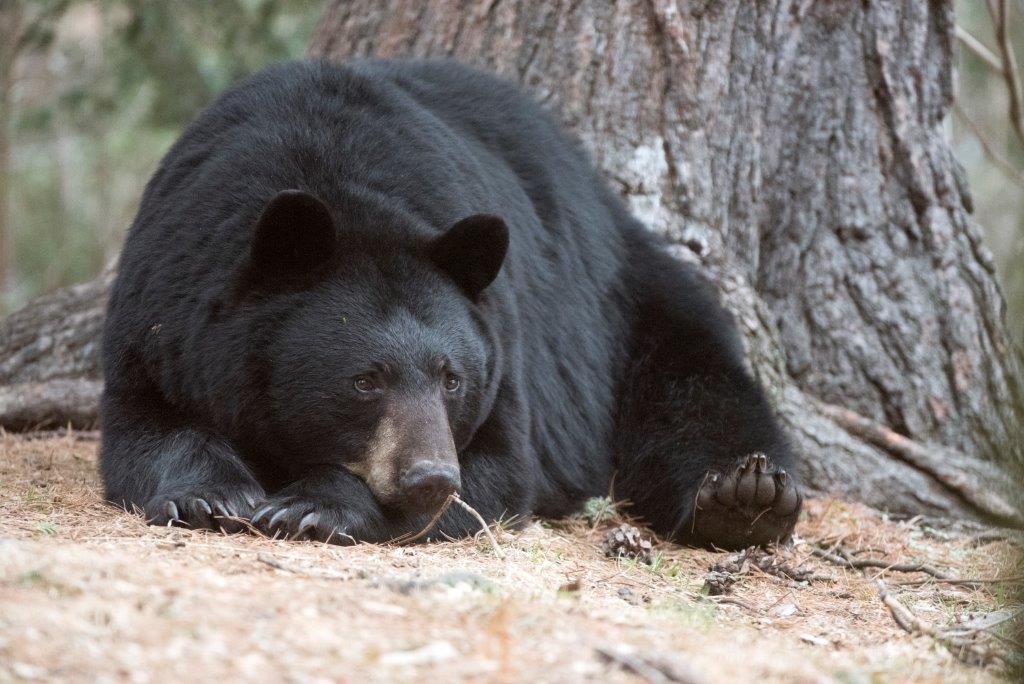 RC resting yet alert https://www.youtube.com/watch?v=VrI2eYxPqSc I hope Lucky and Holly become more tolerant soon. Ted is as peaceful as ever.
RC resting yet alert https://www.youtube.com/watch?v=VrI2eYxPqSc I hope Lucky and Holly become more tolerant soon. Ted is as peaceful as ever.
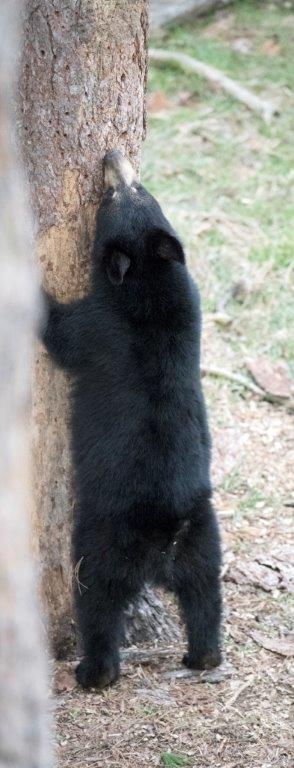 RCs cubAt the Wildlife Research Institute, RC’s actions and face tell a story. She arrived for the third day with only two females, Valentine and Ohio (named for the shapes of their big white chest patches). Last we heard, Rambler, the male yearling, was chasing deer. (Rambler was named for his tendency to ramble off) We know from other families that male yearlings can become more independent in May, prior to family break-up, but we are also worried that he might have gotten kicked. Deer have killed wolves that way. I’ve seen how fast a deer can defend itself using its sharp hooves.
RCs cubAt the Wildlife Research Institute, RC’s actions and face tell a story. She arrived for the third day with only two females, Valentine and Ohio (named for the shapes of their big white chest patches). Last we heard, Rambler, the male yearling, was chasing deer. (Rambler was named for his tendency to ramble off) We know from other families that male yearlings can become more independent in May, prior to family break-up, but we are also worried that he might have gotten kicked. Deer have killed wolves that way. I’ve seen how fast a deer can defend itself using its sharp hooves.
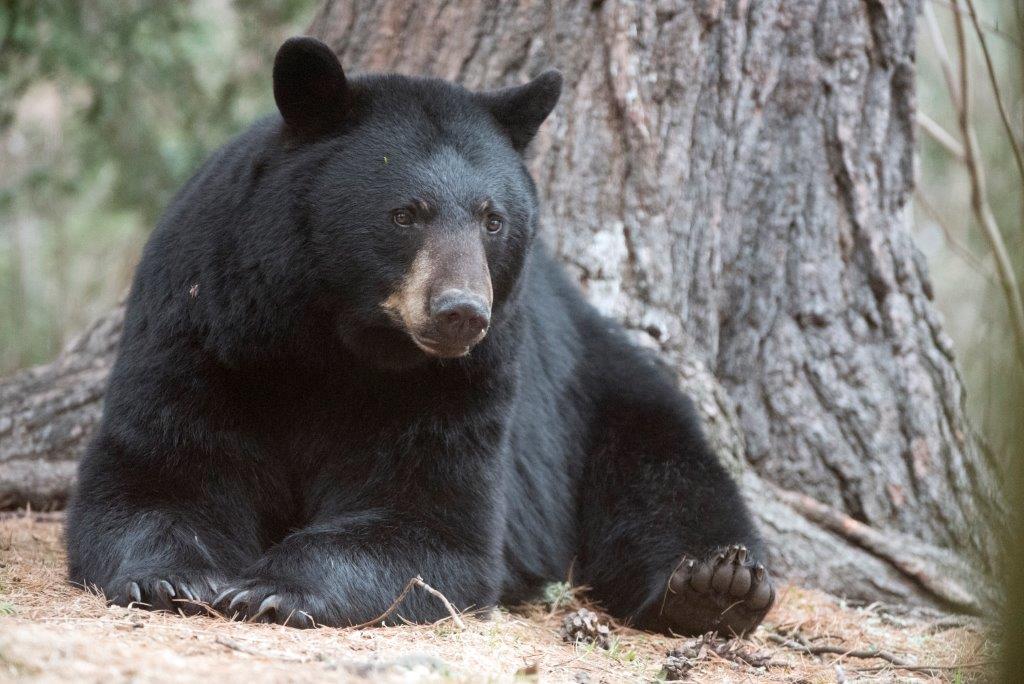 WatchingRC was particularly wary today. Exploring took precedence over eating. She went from tree to tree, sniffing them, which is a common response to the scent of a bear. She paid special attention to a dying (from beetle larvae) red pine that has been marked by several males over the years. Mating season is approaching. Males typically mark a lot now and through mating season. One of RC’s female yearlings also checked the tree, stretching to sniff as high as she could. The height suggested that the bear that marked it was a tall male marking with his shoulders, neck, and crown. The photo shows the yearling stretching up for a sniff.
WatchingRC was particularly wary today. Exploring took precedence over eating. She went from tree to tree, sniffing them, which is a common response to the scent of a bear. She paid special attention to a dying (from beetle larvae) red pine that has been marked by several males over the years. Mating season is approaching. Males typically mark a lot now and through mating season. One of RC’s female yearlings also checked the tree, stretching to sniff as high as she could. The height suggested that the bear that marked it was a tall male marking with his shoulders, neck, and crown. The photo shows the yearling stretching up for a sniff.
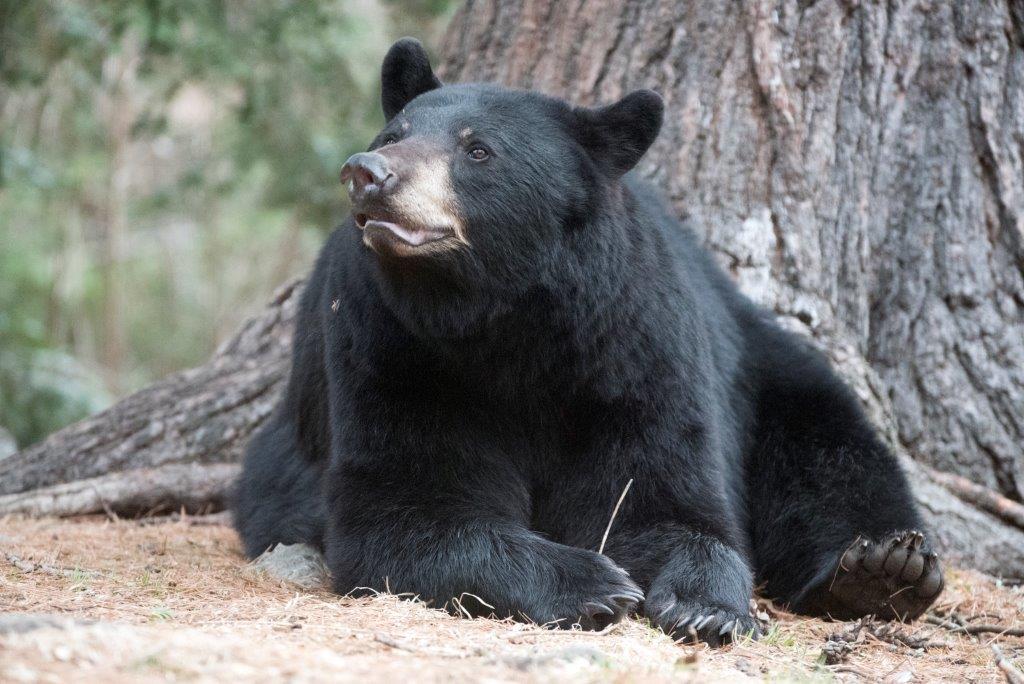 SniffingWith tension in the air, the two yearlings climbed high in the white pine to sleep. RC rested at the bottom but could hardly rest as she responded to every scent and sound. One second, she’d have her head on a paw with her eyes closed and her ears in a neutral position. Then her eyes would open and her ears would snap forward. She’d lift her head to look and listen. I doubt if she was sensing a bear. The direction was toward the water bubbling through the beaver dam where we heard a beaver slap its tail. Sometimes she lifted her head with her ears in a neutral position but sniffing the air intently with her mouth opening slightly with each breath as she sucked air past the vomeronasal organ on the roof of her mouth. That organ is particularly sensitive to molecules of a size common in sexual odors.
SniffingWith tension in the air, the two yearlings climbed high in the white pine to sleep. RC rested at the bottom but could hardly rest as she responded to every scent and sound. One second, she’d have her head on a paw with her eyes closed and her ears in a neutral position. Then her eyes would open and her ears would snap forward. She’d lift her head to look and listen. I doubt if she was sensing a bear. The direction was toward the water bubbling through the beaver dam where we heard a beaver slap its tail. Sometimes she lifted her head with her ears in a neutral position but sniffing the air intently with her mouth opening slightly with each breath as she sucked air past the vomeronasal organ on the roof of her mouth. That organ is particularly sensitive to molecules of a size common in sexual odors.
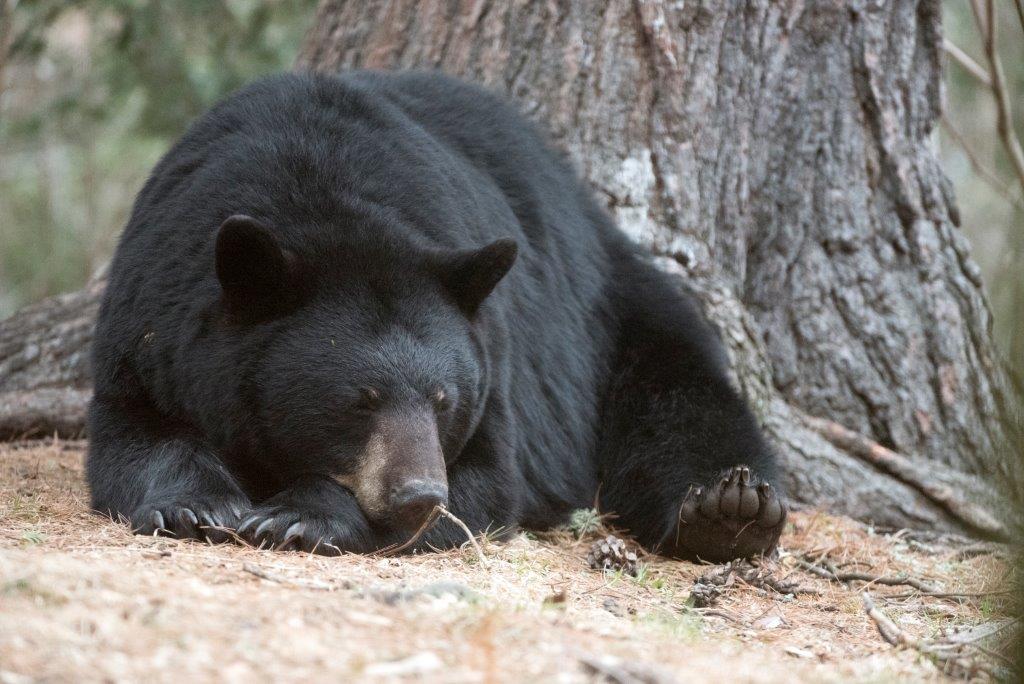 SleepingExcitement is in the air as the bears’ metabolisms ramp up, green-up is perhaps only a week away, and mating season and family break-up are nearly upon us.
SleepingExcitement is in the air as the bears’ metabolisms ramp up, green-up is perhaps only a week away, and mating season and family break-up are nearly upon us.
The seven Black Bear Field Courses are about full. If you are interested in learning directly from the bears, email
Thank you for all you do.
Lynn Rogers, Biologist, Wildlife Research Institute and North American Bear Center
